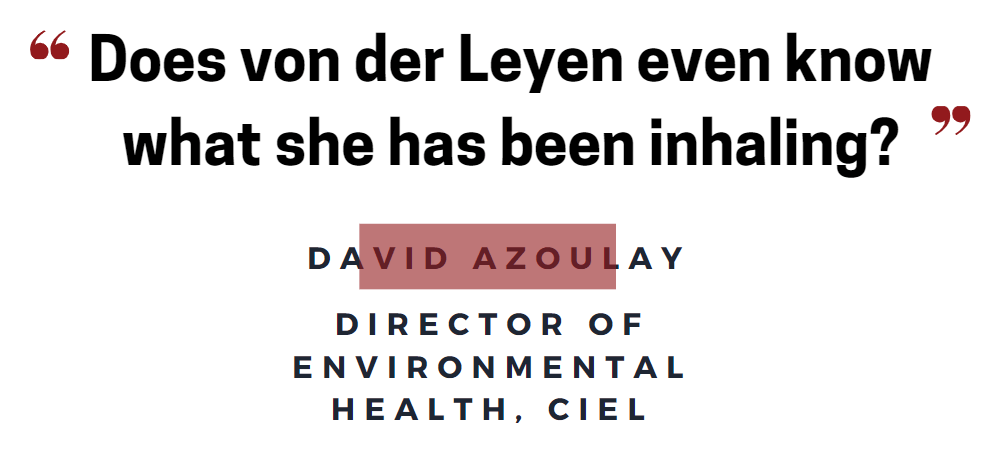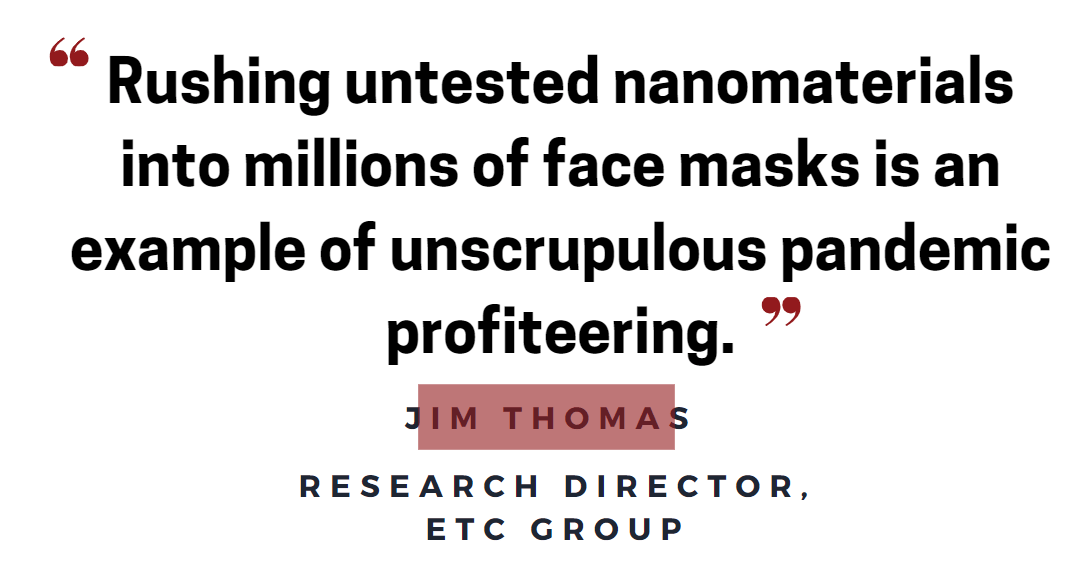Weeks after they were banned in Canada for containing dangerous nanoparticles that caused respiratory problems in schoolchildren, allegedly toxic face masks have flooded the European market and are even being worn by top EU officials.
“Masks are an essential first line of defence, both against the virus and for a lot of professions and professionals who are exposed to toxicants in the air as part of their work,” David Azoulay, Director of Environmental Health at the Center for International Environmental Law (CIEL), told The Brussels Times.
“Clearly masks are essential in the fight against the pandemic. In that respect, we also believe those masks provided and made available to the public should be safe.”
Azoulay and others from CIEL and various leading international health and environmental groups are concerned that this isn’t the case when it comes to millions of masks being shipped to the EU, largely from Chinese manufacturers.
“With the rising demand for masks, a lot of mask manufacturers have been trying to find a market edge,” said Azoulay. “And one of those edges is trying to treat their mask, or build into their mask some kind of virucide, or antiviral component.”
Sometimes that’s advertised as silver, which has antimicrobial properties. In the case of the masks flooding Europe right now - and the mask EU President Ursula von der Leyen was photographed wearing - it’s graphene.
“It has wonderful electromagnetic properties, which is why it's used in a lot of electronics,” explained Azoulay. “Graphene comes in the form of thin flakes which have very jagged edges. Because it is so thin - just one atom thick - it can serve a role as a sort of molecular knife, slicing through biological membranes it comes into contact with.”
The idea is that when the virus comes into contact with the graphene, it will cut into it and render it harmless.
“But if you inhale some of those particles, once it gets into your lungs it will play a similar role,” Azoulay warned.
Canada distributed the masks to schoolchildren and bus drivers in 2020, and a concerned parent alerted authorities to the risks of its nanographene particles back in January of this year.
Canada banned the masks in March after a risk assessment by Health Canada identified serious concerns.
“A number of individuals have come forward in Quebec reporting breathing problems, headaches, skin complaints and other adverse effects from the ‘healfiber’ masks,” they said at the time in a memo urging people to stop using them or any other mask that contains graphene.
Shengquan Group, which manufactures the masks in China, still sells them on Amazon and touts the usage of graphene in the item description, which reads in broken English: “GRAPHENE CLOTH MASK. Use biomass graphene and other high-quality materials, 2 layers, single pack. The outer polyester fiber/inner biomass graphene spandex sweat cloth. It protects against dust, pollen and droplet.”
Shengquan Group publicly shared images of European Commission President Ursula von der Leyen wearing their products on their Facebook page, and analysis by EtcGroup found that the German state of Hesse placed an order for 33 million of these same masks.
“Does President Ursula von der Leyen even know what she has been inhaling?” asked Azoulay.
“It’s not so distant from what happened five weeks ago in Belgium,” he pointed out.
The Belgian government told its citizens back in February to stop wearing the masks they’d distributed for free in the summer of 2020 after a confidential Sciensano report was leaked, revealing that the Belgian Institute for Public Health was concerned that they might be toxic.
The reasoning was similar- the presence of nanoparticles in the fabric of the mask that when inhaled could damage the respiratory tract, in this case nanoparticles of silver and titanium dioxide.
Those masks had come from a €40 million agreement with Luxembourg-based company Avrox, who manufactured the masks in Asia. The agreement itself came under investigation for potential fraud because two of the people involved are said to personally know each other very well.
Azoulay estimates that Chinese manufacturers are producing about 2-5 million of the toxic graphene masks a day.
“It is very concerning and very problematic,” said Azoulay. “A lot of experts who have been working on this for some time were quite baffled to find out that people were using the masks. To think that we had spent tens of millions of dollars to assess potential risk, and yet when it comes to manufactured products, it’s still happening.”
He points out that because of the massive market and such a huge demand, controlling authorities aren't checking each and every component.
CIEL and other organisations published a letter urging for policy action regarding the toxic masks, calling on officials to both ensure that what comes onto the market is safe and will protect the health of users, and also to be clear with bans of certain masks so that such measures aren’t misinterpreted to mean that masks in general are dangerous.
“We’re in the age of social media, information flows around,” said Azoulay. “One of the worst things that could happen in Europe now would be people blowing up some scandal about masks that would create a general reluctance in the public to wear them.”
“Already we’re seeing some anti-mask and conspiracy groups using the information that comes out of Canada to claim that masks in general are dangerous.”
Azoulay and others are concerned that the presence of genuinely harmful masks on the market will stoke anti-mask sentiment that could possibly lead to people feeling reluctant to wear them at all.
“When you see the sort of reaction happening in Europe around the vaccines,” said Azoulay, referring to a reluctance on behalf of some Europeans to be vaccinated due to highly publicised rare side effects, “the last thing we want is the public choosing to not wear the masks for safety reasons.”
The concerns over some masks are related to the nanoparticles contained within their fabric, not the covering of one’s mouth and nose in general, which has proven effective at curbing the spread of the coronavirus.
“Face masks are supposed to keep citizens safe, not put them at further risk. Rushing untested nanomaterials into millions of face masks is an example of unscrupulous pandemic profiteering,” said Jim Thomas, Research Director of ETC Group, a Canadian-based watchdog who has been pushing for technology assessment and precaution.
“EU President von der Leyen needs to urgently reassure parents, workers and other citizens of Europe that the commission’s commitment to the precautionary principle will not be cast aside to let risky tech companies make a killing in a pandemic.”
The EU Commission, which received a copy of the letter, said they hadn’t known about the issue with the toxic masks.
“The Commission was not aware of concerns relating to the specific masks – we learned about it from press reports and following a letter from NGOs on this issue. Therefore, the Commission is liaising with the national market surveillance authorities about these specific concerns,” said a Commission official asked to comment on the matter.




